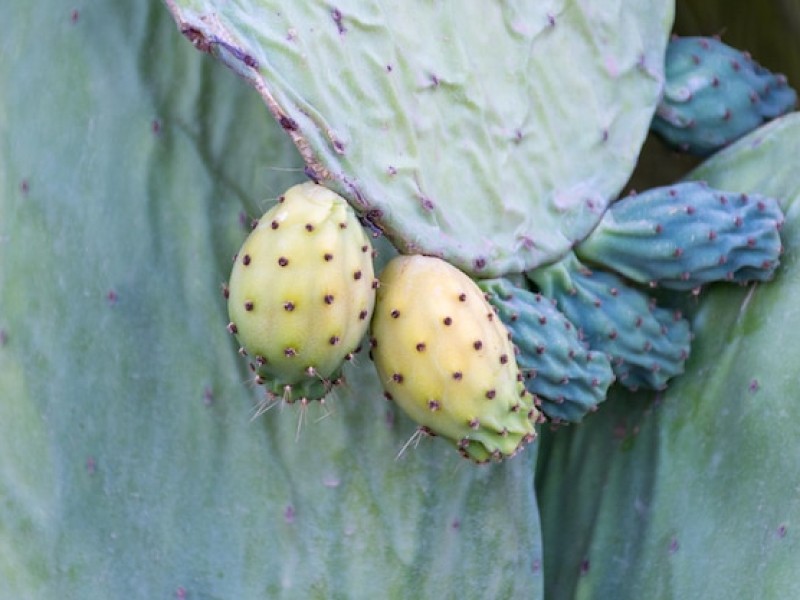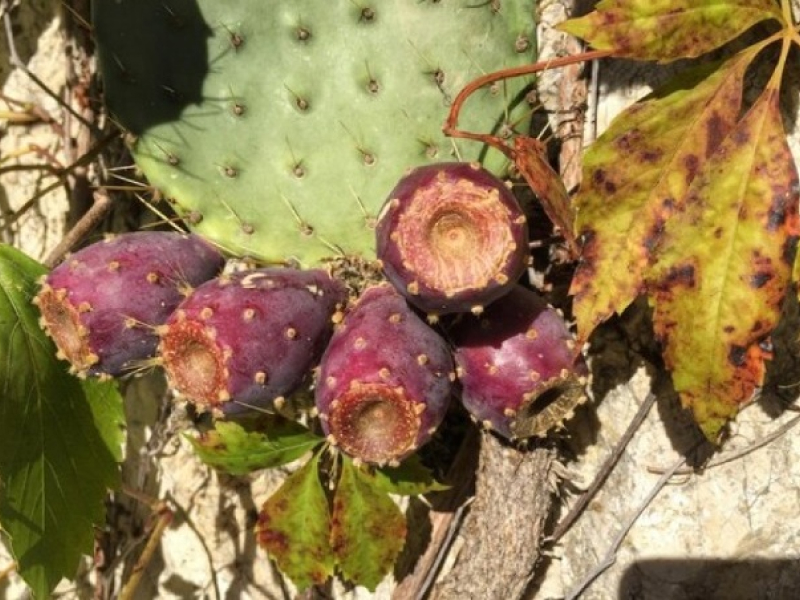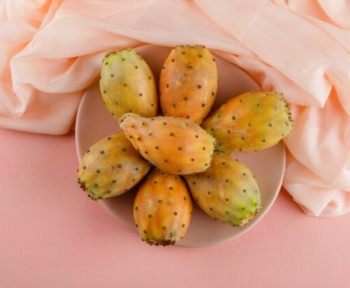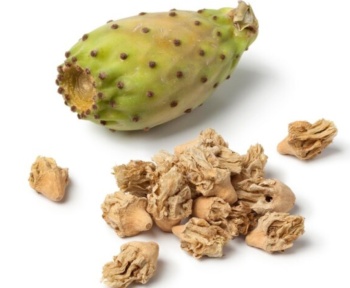Introduction
So, you probably have yet to hear of Xoconostle cactus fruit. Don’t worry; you’re not alone. It’s one of those fruits that isn’t exactly on the typical grocery store shelves, but trust me, it’s worth knowing about. This little-known fruit is gaining attention for its health benefits, not just because it’s exotic. Packed with nutrients and a distinct tangy flavor, Xoconostle is making waves, especially among people looking to try something new for their health. Let’s dive into what makes this sour cactus fruit so unique.
What Is Xoconostle Cactus Fruit?
A Quick Overview of Xoconostle
You might wonder, “What exactly is Xoconostle, and where has it been hiding all my life?” It’s a fruit that grows on the prickly pear cactus (yes, the same cactus that can be a bit of a pain if you’re not careful). But while the regular prickly pear is sweet and juicy, Xoconostle brings the opposite vibe—a little tart, almost like a lemon or lime, but with its unique twist. You’ll usually find it in shades of green or red, and when it’s ripe, it’s like nature’s version of a tangy surprise.
Xoconostle might not be as widely known as some other fruits. Still, it’s a hidden gem—especially in Mexico, where it’s been around for centuries. It’s starting to make its way into more kitchens, and for good reason. The flavor is bold and refreshing but also packs a serious nutritional punch.

Where Does Xoconostle Come From?
It’s believed that Xoconostle originated in Mexico, where it’s been enjoyed for generations. The cactus that bears it thrives in hot, dry climates, and the fruit is harvested at just the right moment to get that perfect balance of sourness. As it gains popularity outside of Mexico, it’s popping up in health food stores and farmer’s markets worldwide.
Whether in the U.S., the UK, or beyond, you might start seeing it on more menus and grocery shelves soon. It’s becoming a go-to for people looking for healthier fruit alternatives—especially in places where food trends are constantly shifting.
Health Benefits of Xoconostle Cactus Fruit
Let’s get into the good stuff. Why should you add this fruit to your diet? Aside from the fact that it’s a conversation starter, Xoconostle is loaded with health benefits. So, if you love finding new superfoods to keep your body in tip-top shape, Xoconostle should be on your radar.
Nutritional Value
First off, let’s talk numbers. Xoconostle is low in calories but packed with essential nutrients. It’s loaded with fiber, antioxidants, and vitamin C—three things your body will thank you for. Here’s what you can expect from just 100 grams of this tangy fruit:

For just 50 calories, you get many nutrients for your overall health. Plus, the antioxidants help fight off free radicals, basically the bad guys in your body.
Supports Digestive Health
Suppose you want to keep things running smoothly in your digestive system (and who isn’t?). In that case, Xoconostle’s fiber content can help you out. The fruit is high in fiber, which can help with things like constipation or bloating. If your digestive system could use extra help, consider adding Xoconostle to your meals.

Good for Heart Health
Your heart will also thank you for adding Xoconostle to your diet. The fruit is rich in potassium, which is excellent for regulating blood pressure. That’s key when it comes to maintaining heart health. Plus, the antioxidants in Xoconostle have been shown to help reduce oxidative stress—meaning they protect your heart from damage caused by harmful molecules.
Helps Regulate Blood Sugar
Xoconostle can be a valuable addition to the diet of those who need to monitor blood sugar levels. Studies suggest this fruit can help lower blood sugar, especially for diabetes patients. It also helps to reduce bad cholesterol, which can help keep your heart healthy in the long run.
Boosts Immune Function
Let’s remember Xoconostle’s vitamin C content. Vitamin C boosts the immune system, helping your body fight illnesses and improving skin health. So, Xoconostle can help if you’re looking for a natural way to stay healthy—especially during cold and flu season.

How to Eat and Prepare Xoconostle Cactus Fruit
If you’re curious about how to eat this fruit, don’t worry—it’s pretty simple. Xoconostle can be eaten raw, cooked, or blended into smoothies. Here’s a quick guide to get you started.
How to Prepare Xoconostle
- Pick the Right Fruit
Choose an Xoconostle that feels firm when you squeeze it. Avoid fruits with visible bruises or soft spots. Whether green or red, you want it to have a nice, vibrant color.
- Peel the Fruit
Cut off both ends of the fruit with a sharp knife. Then, carefully peel off the skin with your knife—be gentle so you don’t lose any fruit’s flesh.
- Slice and Serve
Once peeled, you can slice or cube it to your liking. The fruit’s tartness makes it a great addition to various dishes.
Recipe Ideas
If you’re looking to try something new, here are a couple of ideas for incorporating Xoconostle into your meals:

Xoconostle Smoothie
- Ingredients: 1 ripe Xoconostle, one banana, ½ cup coconut milk, one tablespoon honey.
- Directions: Blend it all, and you’ll have a refreshing smoothie for a quick breakfast or a post-workout snack.
Xoconostle Tacos
- Ingredients: Xoconostle, grilled chicken, cilantro, diced onions, small corn tortillas.
- Directions: Grill the Xoconostle, slice it, and add it to your tacos. The tangy flavor pairs perfectly with savory grilled chicken.
Xoconostle Cactus Fruit in Traditional Medicine
Before Xoconostle became a trendy fruit, it was already used in traditional Mexican medicine. It’s been valued for its digestive and anti-inflammatory properties for centuries. Here’s a little history lesson on how this fruit has been used to promote wellness.
Uses in Traditional Medicine
People in Mexico have long relied on Xoconostle for its digestive benefits. It’s also been used to help reduce inflammation and lower cholesterol. While modern science is catching up to these benefits, Xoconostle has long had a place in healing practices.
Medicinal Benefits
- Fights Inflammation: If you struggle with inflammation or joint pain, Xoconostle could be a natural remedy.
- Aids Digestion: The high fiber content makes it great for digestion, helping things run smoothly.
- Reduces Oxidative Stress: Antioxidants help protect cells from damage caused by free radicals, which could improve overall health.

How to Grow Xoconostle Cactus
Now, if you’re feeling adventurous and want to grow your Xoconostle cactus, it’s not as complicated as you might think. Here’s how to get started.
Step-by-Step Growing Guide
- Pick the Right Spot
Xoconostle thrives in hot, dry climates, so ensure you have a sunny spot in your garden. They love sunlight, so give them plenty of it.
- Prepare the Soil
The cactus needs well-draining soil, so if your garden is heavy on clay, you may need to mix in sand or cactus-specific soil.
- Watering
Xoconostle doesn’t require much water. Water it sparingly—just enough to keep the soil from drying out completely. Overwatering can be a problem.
- Harvesting
It’s time to harvest once the fruit turns bright (usually red or green). Twist it off the cactus, and you’re ready to enjoy it!
Xoconostle Cactus Fruit and Sustainability
Besides being good for your health, Xoconostle is a sustainable crop. It’s drought-resistant, so it doesn’t require much water to thrive, making it an environmentally-friendly option.

Why It’s Good for the Environment
Because it can grow with minimal water, Xoconostle is an excellent option for water-scarce areas. Its hardy nature means it can thrive in climates where other crops might struggle.
Sustainable Farming
Xoconostle’s ability to grow with limited resources makes it an excellent alternative for farmers looking for sustainable crops. Plus, it’s easy to grow, meaning more people could start cultivating it to diversify their farming practices.
Interview Insights: A Farmer’s Perspective on Growing Xoconostle
“Growing Xoconostle has been a lifesaver for me,“ says Maria Lopez, a farmer from Mexico. “It’s simple to grow, doesn’t need much water, and more people are starting to buy it locally and abroad.”
Maria explained how the plant’s ability to survive harsh weather has helped her keep her farm running during dry seasons. She added, “What I love most is seeing people enjoy its unique taste and health benefits. It feels good to know I’m offering something valuable.”
Maria’s story shows that Xoconostle isn’t just a healthy fruit—it’s also a reliable and sustainable crop for farmers.
Conclusion
Xoconostle cactus fruit is a hidden treasure with plenty of benefits for your health and well-being. From aiding digestion and heart health to being a sustainable crop, this fruit is worth considering for your next grocery trip. Try it; you might love its tangy flavor and health benefits. Don’t be surprised if it ends up becoming your new favorite fruit.
FAQs
Its high fiber content and low calorie count make it a great addition to a weight-loss diet.
It’s sour and tangy, like a citrus fruit, but with its unique flavor.
Absolutely! It’s delicious on its own or added to smoothies and salads.
Plant it in a sunny spot with well-draining soil. It’s low-maintenance and loves dry, hot climates.
Yes, prickly pear has been shown to help balance blood sugar. It contains natural compounds that may slow sugar absorption, beneficial for people managing diabetes or wanting steady energy levels. Always check with your doctor for advice that suits your health needs.





